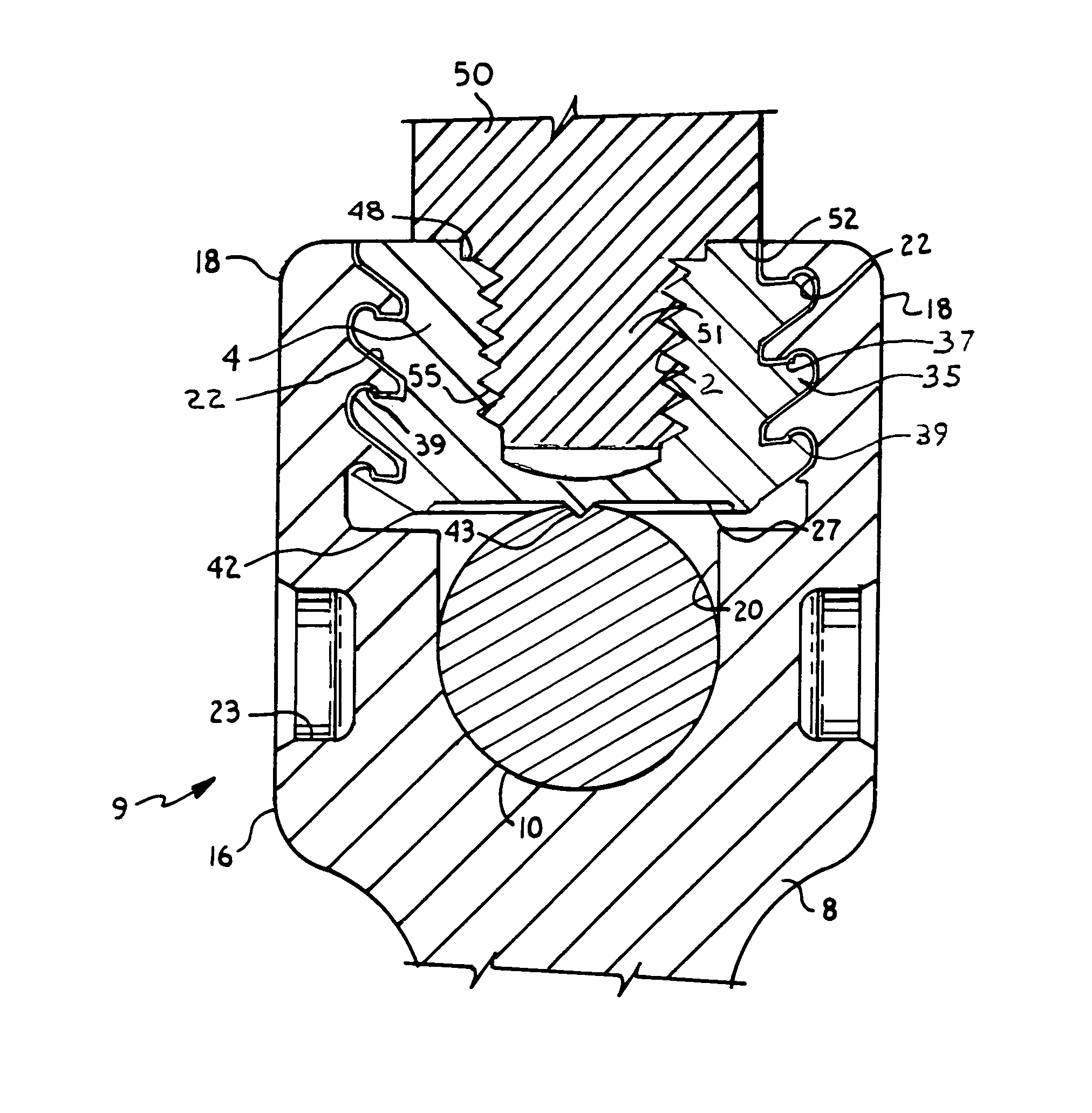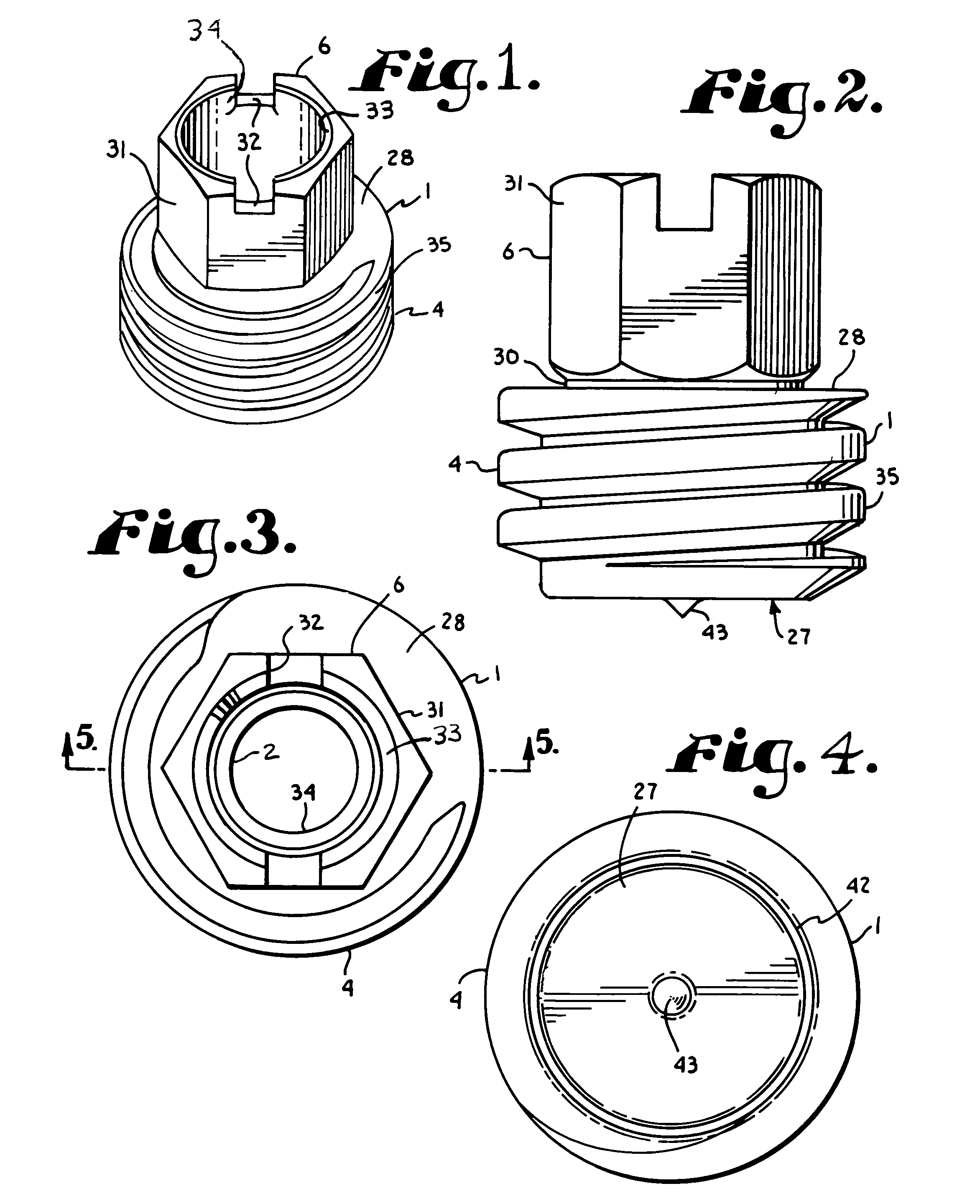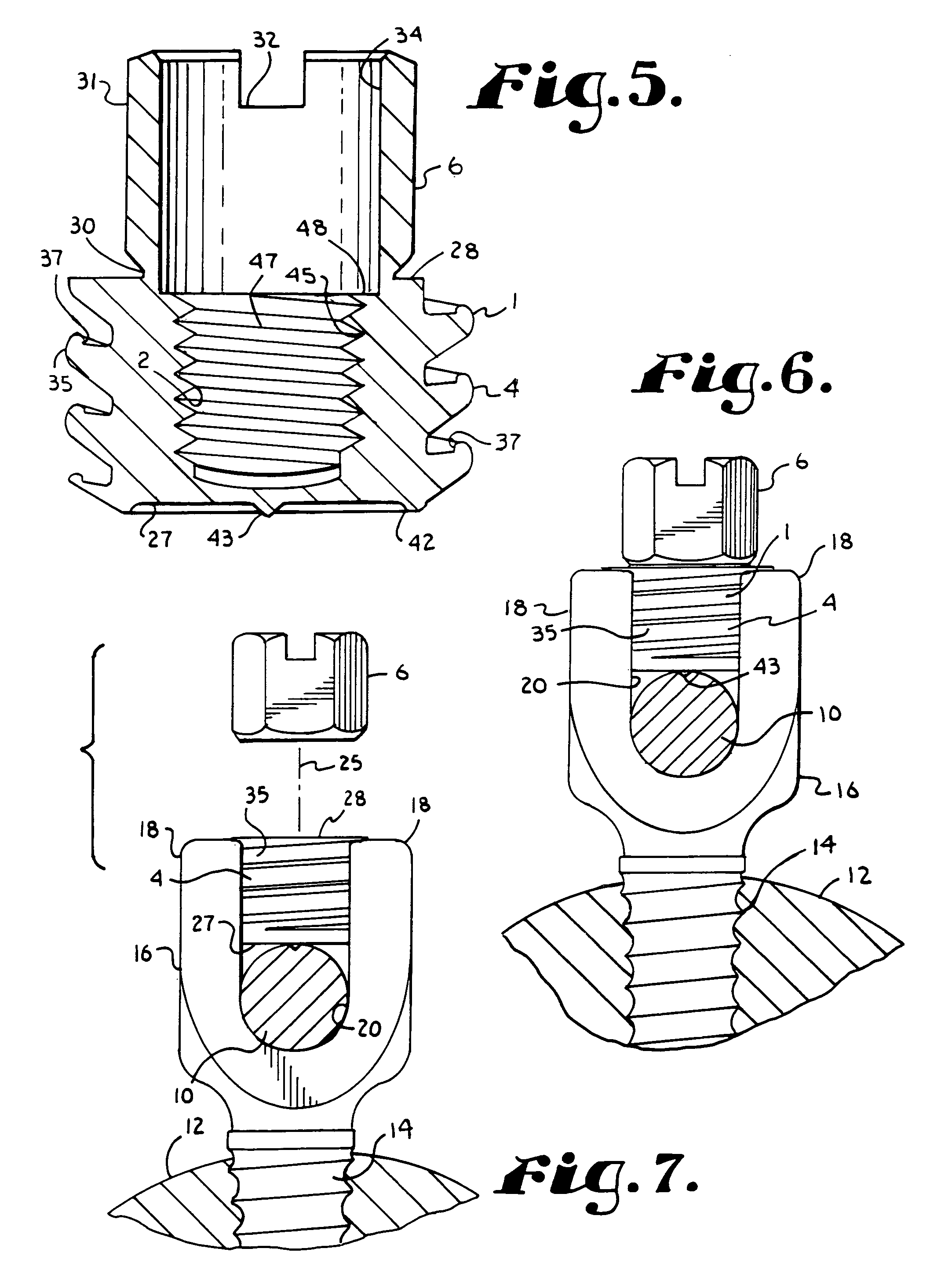Closure for rod receiving orthopedic implant having left handed thread removal
a technology for orthopedic implants and closures, applied in the field of closures for rods receiving orthopedic implants having left handed thread removal, can solve the problems of implant special problems, difficult to solve, and medical implants present a number of problems to both surgeons, and achieve the effects of low or minimal profile, enhanced setting engagement of closures, and low manufacturing cos
- Summary
- Abstract
- Description
- Claims
- Application Information
AI Technical Summary
Benefits of technology
Problems solved by technology
Method used
Image
Examples
Embodiment Construction
[0051]As required, detailed embodiments of the present invention are disclosed herein; however, it is to be understood that the disclosed embodiments are merely exemplary of the invention, which may be embodied in various forms. Therefore, specific structural and functional details disclosed herein are not to be interpreted as limiting, but merely as a basis for the claims and as a representative basis for teaching one skilled in the art to variously employ the present invention in virtually any appropriately detailed structure.
[0052]Referring to the drawings in more detail, the reference numeral 1 generally designates an anti-splay closure with a partial axial bore 2. The closure 1 generally includes a closure plug or body 4 and a breakaway head 6 for installation. The closure 4 is used in cooperation with an open headed bone implant screw 8 (FIGS. 6 and 7) to form an implant anchor assembly 9 to secure or anchor a spinal fixation member or rod 10 with respect to a bone 12, such as...
PUM
 Login to View More
Login to View More Abstract
Description
Claims
Application Information
 Login to View More
Login to View More - R&D
- Intellectual Property
- Life Sciences
- Materials
- Tech Scout
- Unparalleled Data Quality
- Higher Quality Content
- 60% Fewer Hallucinations
Browse by: Latest US Patents, China's latest patents, Technical Efficacy Thesaurus, Application Domain, Technology Topic, Popular Technical Reports.
© 2025 PatSnap. All rights reserved.Legal|Privacy policy|Modern Slavery Act Transparency Statement|Sitemap|About US| Contact US: help@patsnap.com



